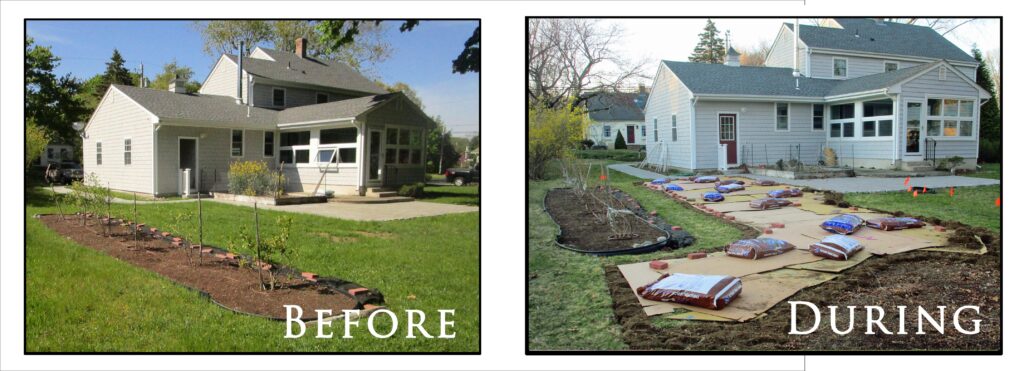WHY NOT TURN YOU LAWN INTO A CERTIFIED HABITAT GARDEN FOR BUTTERFLIES, BEES, BIRDS?
 We’re helping a homeowner in Seekonk, MA fulfill her dream of turning most of her lawn into pollinator habitat. Collaborating through the iterative design, installation, and maintenance phases, the client herself has gotten earth under her fingernails and dirtied the knees of her jeans every step of the way.
We’re helping a homeowner in Seekonk, MA fulfill her dream of turning most of her lawn into pollinator habitat. Collaborating through the iterative design, installation, and maintenance phases, the client herself has gotten earth under her fingernails and dirtied the knees of her jeans every step of the way.
In the 2020 season we designed and installed two crescent-shaped ornamental landscape beds for MA native trees, shrubs and perennials. In the spring of 2021 we’re expanding upon last year’s work by tying in a larger portion of the back yard lawn. Because we have time on our side before the arrival of native plant meadow kits from the Native Plant Trust, we’re using the sheet composting aka lasagna method of turning lawn into garden beds.
Using flags and garden hoses, we laid out the shape of the new planting area, tweaked it, then committed to it by laying down two layers of heavy cardboard that came from local bicycle and appliance stores. The cardboard keeps sunlight from the grass to keep it from growing.
On top of the cardboard we’ll be laying down high quality drip irrigation hoses, aka pipes, that will tie into the existing lawn irrigation system. The pop-up sprinkler heads of the zone where this section of pollinator bed is going were removed and capped to preserve water, water pressure, and associated financial costs.
Once the irrigation pipes are laid, we’ll soak the cardboard with water and spread 3-4 inches of high quality, locally sources organic matter, such as leaf mulch on top of the cardboard. When it comes time to plant, the mulch will be pulled back in each planting spot, an X-shape cut into the cardboard with a utility knife, the cardboard peeled back and the native pollinator plant installed to the proper depth and watered. The mulch will be re-spread – but not allowed to come into contact with the stem of the plants.
As for the design of the pollinator garden, this area receives direct sun from about mid-day through sunset. Shorter plants, such as perennials and small shrubs, will be arranged along the south-facing area of the beds, with taller plantings, such as perennials, trees and shrubs behind so as not to spread shadows on the sunnier areas. We’re actively collaborating on the design now.
There will also be a Native Plant Trust native plant meadow kit for sun installed in the planting area between the garage and paver path. Sunlight reflected off the garage will add to the total light that the plantings receive.
